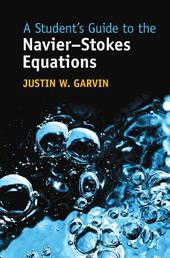
|
A Student's Guide to the Navier-Stokes Equations
Hardback
Main Details
| Title |
A Student's Guide to the Navier-Stokes Equations
|
| Authors and Contributors |
By (author) Justin W. Garvin
|
| Series | Student's Guides |
|---|
| Physical Properties |
| Format:Hardback | | Pages:244 | | Dimensions(mm): Height 234,Width 157 |
|
| Category/Genre | Materials science
Aerospace and aviation technology |
|---|
| ISBN/Barcode |
9781009236157
|
| Classifications | Dewey:515.353 |
|---|
| Audience | |
|---|
| Illustrations |
Worked examples or Exercises
|
|
Publishing Details |
| Publisher |
Cambridge University Press
|
| Imprint |
Cambridge University Press
|
| NZ Release Date |
30 April 2023 |
| Publication Country |
United Kingdom
|
Description
The Navier-Stokes equations describe the motion of fluids and are an invaluable addition to the toolbox of every physicist, applied mathematician, and engineer. The equations arise from applying Newton's laws of motion to a moving fluid and are considered, when used in combination with mass and energy conservation rules, to be the fundamental governing equations of fluid motion. They are relevant across many disciplines, from astrophysics and oceanic sciences to aerospace engineering and materials science. This Student's Guide provides a clear and focused presentation of the derivation, significance and applications of the Navier-Stokes equations, along with the associated continuity and energy equations. Designed as a useful supplementary resource for undergraduate and graduate students, each chapter concludes with a selection of exercises intended to reinforce and extend important concepts. Video podcasts demonstrating the solutions in full are provided online, along with written solutions and other additional resources.
Author Biography
Justin W. Garvin is Associate Professor of Instruction in the Department of Mechanical Engineering at the University of Iowa. He has previously worked as a Research Engineer at Iowa's IIHR-Hydroscience and Engineering research lab and at the US Air Force Research Laboratory. His primary areas of interest are heat, fluid mechanics, and thermal physics.
|